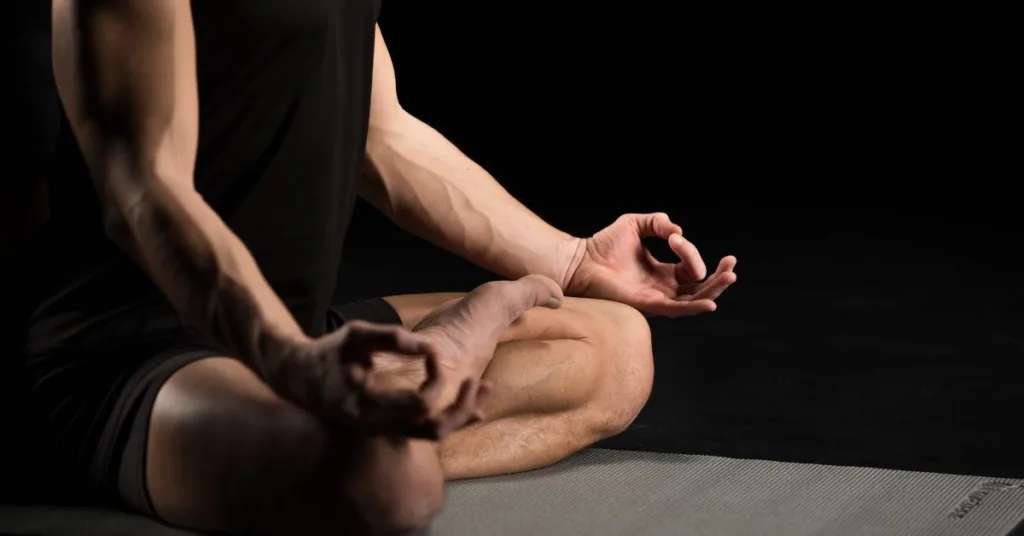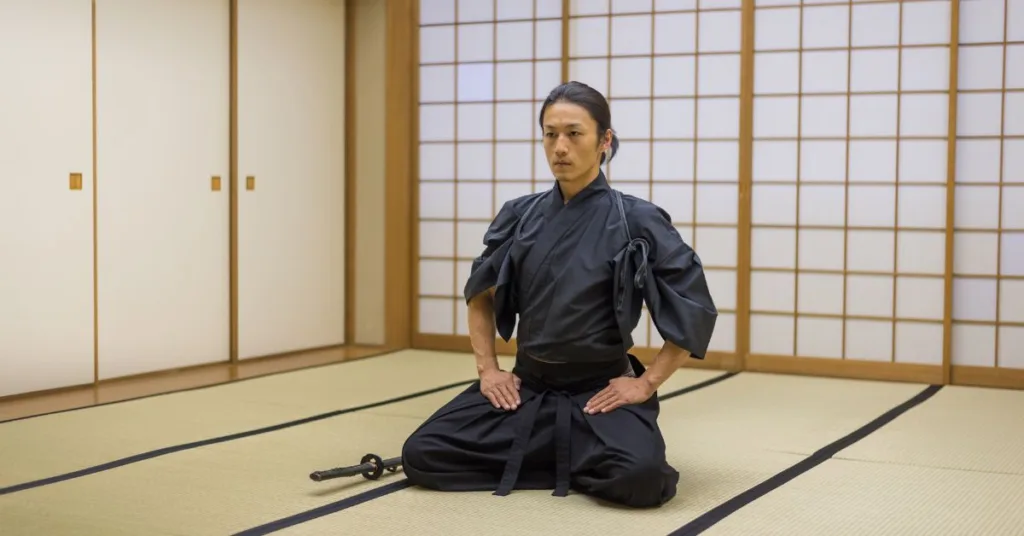Meditation is a practice that involves focusing on the present moment and training attention to increase awareness and reduce stress. It has been practiced for thousands of years in various religious and spiritual traditions, and is now widely recognized as a valuable tool for mental and physical well-being.
There are many different types of meditation, each with its own unique focus and benefits. Some popular types of meditation include mindfulness meditation, transcendental meditation, and mantra meditation.
In this article, we will explore five specific meditation techniques that can be used to calm the mind: psychosomatic training, ninjutsu meditation, tummo meditation, heartbeat meditation, and mindfulness meditation. We will discuss the benefits of each technique, how to practice it, and some common challenges that you may encounter.
Table of Contents
Psychosomatic Training

Psychosomatic training is a type of mind-body intervention that allows the practitioner to focus on the bodily sensations and affect their somatic functions. It allows to regulate heartbeat, breathing, digestion, muscle tension, body temperature and psychosomatic disorders. Psychosomatic training is also called psychosomatic visualization and was invented by Daniel Domaradzki, a willpower coach who combines ancient meditation with modern mental conditioning systems and chaos magick.
Benefits of Psychosomatic Training
Psychosomatic training has been shown to have a number of benefits, including:
- Reduced stress and anxiety
- Improved sleep quality
- Reduced pain
- Improved immune function
- Increased self-awareness
- Enhanced creativity
How to Practice Psychosomatic Training?
Psychosomatic training can be practiced in a variety of ways. One common approach is to lie down in a comfortable position and focus on somatic sensations. With each breath, imagine that you are connecting with your body on a deeper level. Then, move on to focusing on a specific body part. You can start from your lungs if you want to regulate your breath or your heart if your goal is to slow down the heartbeat. Common practices also include focusing on hypertonic muscle groups or even visceral organs. Similarly to tummo, autogenic training or progressive muscle relaxation, psychosomatic training aims to develop a strong mind-body connection to influence the physiology of your organism.
Ninjutsu Meditation

Ninjutsu meditation is a type of meditation that uses techniques from the martial art of ninjutsu to improve focus and concentration. It is a form of mindfulness meditation that involves focusing on the present moment and being aware of your surroundings, which helped ninjas increase their awareness.
Benefits of Ninjutsu Meditation
Ninjutsu meditation has a number of benefits, including:
- Improved focus and concentration
- Increased awareness
- Reduced stress and anxiety
- Improved self-defense skills
- Enhanced mental toughness
How to Practice Ninjutsu Meditation?
Proper ninjutsu meditation is usually taught by an experienced ninjutsu master teacher. There are several ninjutsu meditation techniques, including kuji-kiri meditation, elemental meditations, breathing meditations, and more. However, the original methods are often kept secret by the clans and taught only to the clan members.
Ninjutsu meditation practitioners are typically asked to keep the techniques for personal use, unless they advance to become master teachers themselves and are granted permission to teach others.
Tummo Meditation

Tummo meditation is a type of Tibetan Buddhist meditation that is said to generate inner heat and increase physical and mental strength. It is a form of tantric meditation that involves visualizing the body as a network of channels and chakras.
Benefits of Tummo Meditation
Tummo meditation has a number of benefits, including:
- Increased inner heat
- Improved physical and mental strength
- Increased resistance to cold
- Enhanced concentration and focus
- Increased self-awareness
How to Practice Tummo Meditation?
Original tummo meditation is a complex practice that should be learned from a qualified teacher. However, there are some basic techniques that you can practice on your own.
One approach is to sit in a comfortable position and focus on your breath. As you breathe in, imagine that you are drawing in heat and energy. As you breathe out, imagine that you are radiating this heat and energy throughout your body. This is to be combined with specific breathing meditation practices that are further described in my book The Secrets of Meditation.
You can also practice tummo meditation by visualizing specific chakras in your body. For example, you might focus on the root chakra and imagine that it is a fire burning at the base of your spine. Or, you might focus on the heart chakra and imagine that it is a warm sun radiating love and compassion.
Heartbeat Meditation

Heartbeat meditation is a type of meditation that involves focusing on the heartbeat to promote relaxation and calmness. It is a form of mindfulness meditation that involves paying attention to the sensations of your heartbeat with the goal to form a deeper bond with this organ, which can later allow you to regulate it with sheer focus and willpower.
Benefits of Heartbeat Meditation
- Reduced stress and anxiety
- Improved relaxation and calmness
- Increased self-awareness
- Enhanced focus and concentration
- Improved cardiovascular health
- Lowered blood pressure
How to Practice Heartbeat Meditation?
Heartbeat meditation can be practiced in several positions. You can sit, lie down, or even stand while practicing. The most important thing is to find a comfortable position where you will not be disturbed.
Once you are in a comfortable position, close your eyes and begin to focus on your breath. Notice the rise and fall of your chest as you breathe in and out. Once you are relaxed, begin to focus on your heartbeat. You may be able to feel your heartbeat in your chest, neck, or wrists.
If you have trouble feeling your heartbeat, you can try placing your hand on your chest or neck or simply touching your thumb with your index and middle fingers. Simply focus on the sensations of your heartbeat. You may notice that your heartbeat speeds up or slows down. You may also notice that the rhythm of your heartbeat changes. Just observe these sensations without judgment and focus on the working organ.
Mindfulness Meditation

Mindfulness meditation is a type of meditation that involves focusing on the present moment and being aware of your thoughts, feelings, and bodily sensations without judgment. It is a form of non-directive meditation, which means that there is no specific goal or objective.
Benefits of Mindfulness Meditation
Mindfulness meditation has been shown to have a number of benefits, including:
- Reduced stress and anxiety
- Improved focus and concentration
- Increased self-awareness
- Enhanced compassion and empathy
- Improved mood
How to Practice Mindfulness Meditation?
Mindfulness meditation can be practiced in many ways, including sitting in a comfortable position and focus on your breath. As you breathe in and out, simply observe the sensations of your breath. If your mind wanders, gently bring your attention back to your breath.
You can also practice mindfulness meditation by focusing on other sensations in your body, such as the sounds around you or the feeling of your clothes against your skin. Simply observe these sensations without judgment.
There are also forms of moving mindfulness meditations, including martial arts mindfulness. Yoga can also be a form of moving mindfulness meditation. The goal in mindfulness is to increase awareness, whether by focusing on the self or external surroundings.
Summary

- Key Concepts: Meditation offers many ways to calm the mind. Psychosomatic training, ninjutsu meditation, tummo meditation, heartbeat meditation, and mindfulness meditation each have unique approaches and benefits. Finding the methods which resonate is personalized.
- Diverse Benefits: These approaches alleviate stress, enhance clarity, boost resilience, and promote overall well-being. Understanding how a given meditation technique aligns with an individual’s needs helps facilitate positive outcomes.
- Practice and Persistence: As with any new skill, consistency is key for noticeable gains. Committing to a regular meditation practice offers powerful pathways to mental and physical clarity.
| Meditation Technique | Benefits |
|---|---|
| Psychosomatic Training | Reduced stress, improved sleep, reduced pain |
| Ninjutsu Meditation | Improved focus, increased awareness, reduced stress |
| Tummo Meditation | Increased inner heat, improved strength, enhanced concentration |
| Heartbeat Meditation | Reduced stress, improved relaxation, improved cardiovascular health |
| Mindfulness Meditation | Reduced stress, improved focus, increased self-awareness |
Practical Applications of Meditation Techniques
The techniques learned through meditation offer real-world benefits:
- Workplace stress management: Mindfulness meditation aids in focusing amidst chaotic circumstances, while psychosomatic training provides methods to directly mitigate physiological stress effects.
- Athletes and Performers: Ninjutsu meditation improves concentration needed for optimal performance, while tummo meditation methods may provide benefits when training in harsh environments.
- Personal resilience: Techniques from across a variety of approaches offer diverse tools. Heartbeat meditation helps ground oneself in stressful moments, returning awareness to the physical body to stabilize emotions.




